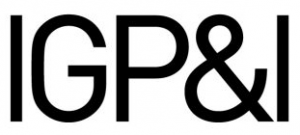With port state control authorities stepping up inspections related to ballast water management, ship operators need to ensure everything is in order: documents updated, systems working, and crews trained.

Ballast water management on the PSC agenda
Published 12 August 2025
Joint inspection campaign on ballast water management
From 1 September to 30 November 2025, Port State Control (PSC) authorities under the Paris and Tokyo MOUs will conduct a Concentrated Inspection Campaign (CIC) targeting Ballast Water Management (BWM) systems. This initiative supports the growing regulatory emphasis on protecting marine ecosystems and ensures operational compliance with the International Convention for the Control and Management of Ships’ Ballast Water and Sediments (BWM Convention).
A pre-defined questionnaire will guide the inspections, and each ship will undergo only one CIC inspection during the campaign. The following main inspection areas are highlighted:
proper certification for BWM Convention,
approval and update of the Ballast Water Management Plan (BWMP),
crew familiarisation in the implementation of the BWMP,
ballast Water Management System approval and its operation,
records in the Ballast Water Record Book (BWRB),
ballast water sediment management, and
valid exemptions, if any.
The CIC questionnaire has no specific questions related to the Safety Management System (SMS) onboard. However, any deficiency related to BWM can affect the onboard and company SMS system.
Other PSC regimes are expected to join the campaign. So far, we are aware that the Riyadh, Indian Ocean, Mediterranean, Black Sea, and Viña del Mar Agreement MOUs have confirmed their participation.
Why ballast water management?
While essential for ship stability, ballast water can unintentionally transport invasive species across ecosystems. When discharged untreated, it can introduce harmful organisms into local environments. The IMO reports hundreds of such invasions globally, some with devastating consequences.
The BWM Convention, in force since 2017, sets international standards to control the spread of potentially invasive species. However, its D-2 standard, which mandates ballast water treatment rather than exchange, only became mandatory for all vessels on 8 September 2024. As a result, many ship operators and crews may still be gaining experience with BWM systems, making this a timely focus for enhanced PSC inspections.
Learning from experience
Australia, a Tokyo MOU member, reports that ballast water non-compliance matters accounted for almost 30% of its 12,987 biosecurity inspections carried out between 1 December 2023 and 30 November 2024 (document MEPC 83/4/14). Crew unfamiliarity with the BWMP, and poor equipment maintenance accounted for 70% of all non-compliance reports. Specific examples of ballast water non-compliance identified included:
deliberate alterations to the BWM system alarm parameters by crew,
ignoring alarms during ballast water uptake/discharge,
Total Residual Oxidant (TRO) sensor failures,
software deficiencies allowing continued BWM system operation during breakdowns,
improper operation of BWM systems, and
software-related issues in BWM system software.
In cases where Australia’s biosecurity inspectors requested additional information, and assessed that the ballast water was not managed, cargo operations of the ship were delayed by one to three days.
USCG committed to strengthen BWM compliance
Although the United States Coast Guard (USCG) has not confirmed participation in the 2025 CIC led by Paris and Tokyo MOUs, the USCG is expected to intensify its focus on ballast water compliance following a 6% increase in BWM-related deficiencies in 2024 (Annual Report 2024). Common issues included inoperable BWM systems, failure to report non-functional systems, and structural integrity concerns. Untreated discharge rose by 200%, emphasising the need for vessel operators to prioritise proper operation and proactive maintenance.
In February 2025, the USCG announced that its inspections will also verify that chemicals used in ballast water treatment systems match the type and manufacturer specified in the system’s manual. Use of non-approved chemicals not only poses safety risks to crew, vessels, and inspectors, but may also invalidate system type approval, compromise treatment effectiveness, and result in deficiencies or fines, according to the USCG.
The US is not a signatory to the BWM Convention and even if the US BWM regulations are broadly aligned with the Convention, they include additional requirements for type approval and operational procedures.
Recommendations
To ensure safe operations and smooth PSC inspections, we encourage ship operators and crews to use this CIC and its pre-defined questionnaire as a timely reminder to verify compliance with the BWM Convention:
Ensure all BWM certificates, plans and record books are current and complete.
Operate and maintain BWM systems properly at all times.
Train crews and ensure familiarity with ship-specific BWMPs.
Evaluate the SMS for any necessary updates.
Do not forget: Changes to the BWM Convention entered into force on 1 February 2025, altering the format of the BWRB (IMO Resolution MEPC.369(80)). Crews should familiarise themselves with the new format, as PSC officers will require records to be kept accordingly.


